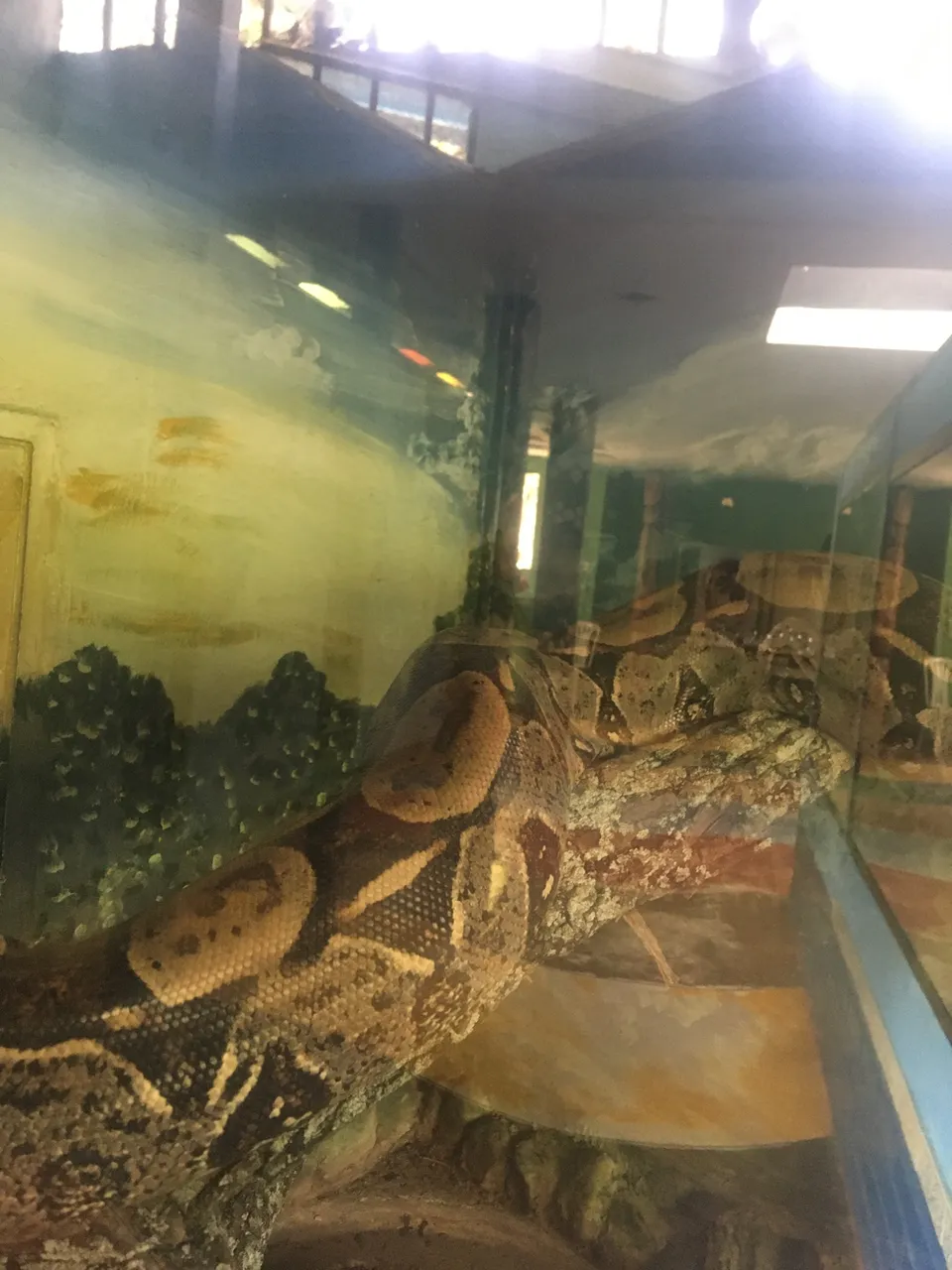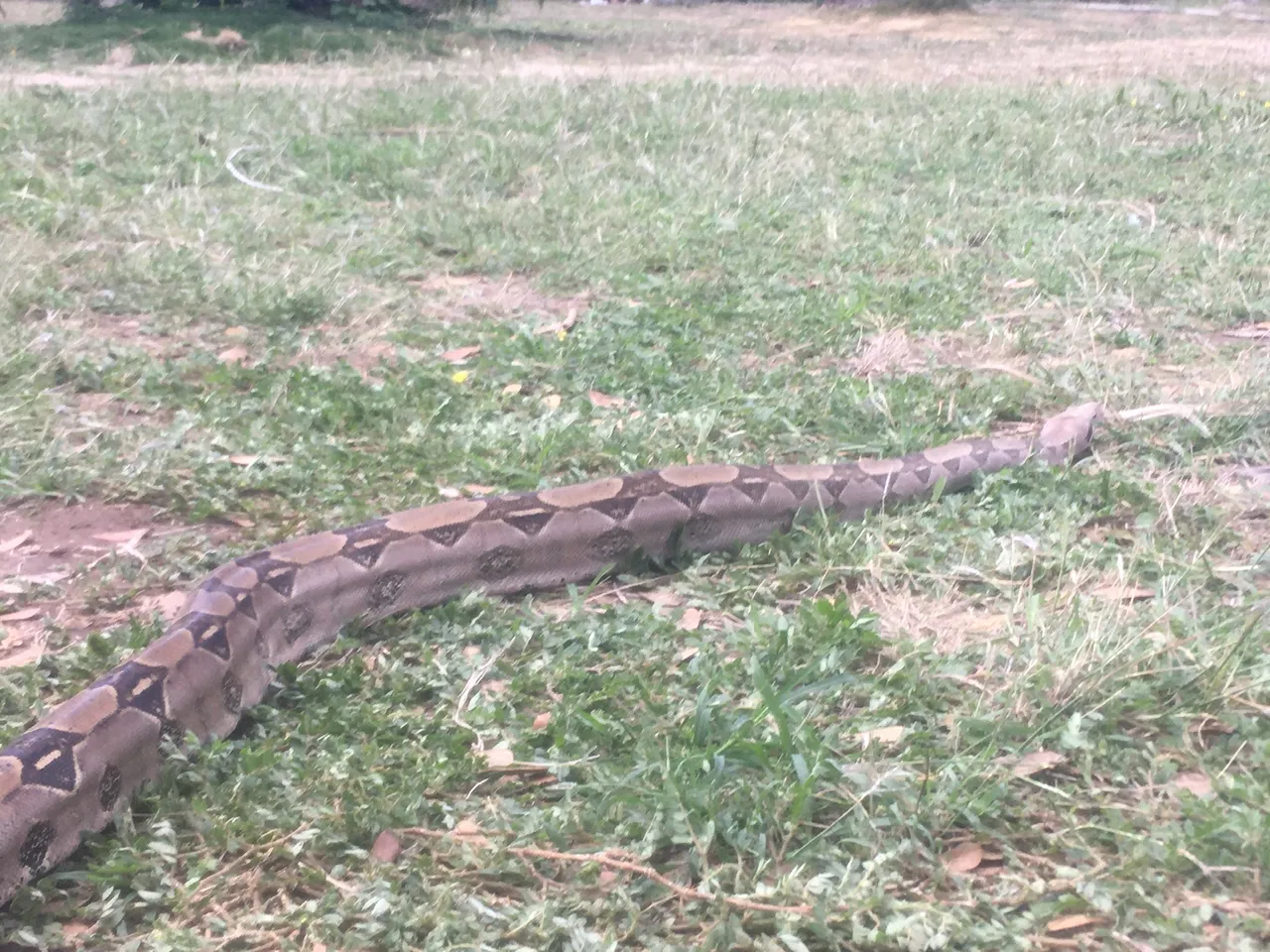
Apreciada comunidad, luego de unos cuantos días de haber comenzado mi andar en esta plataforma, vengo a presentar un nuevo post, esta vez lo hago con una de mis grandes pasiones, mis buenas amigas las serpientes.
Especialmente quiero comentarles un poco sobre la que talvez puede ser la especie de serpiente más común que existe en nuestro país (Venezuela), se trata de la famosa y mal llamada tragavenados, escribo esto porque esta especie no traga venados adultos.
La única forma en que pudiese alimentarse de venados, sería que la serpiente fuese adulto exponencial (enorme) y el venado fuese una cría.
Estos animales habitan en todo el territorio nacional, desde selvas hasta pastizales, y sólo la encontramos desde México a Ecuador, aunque hay boas no son la misma especie.
Está especie puede llegar a medir hasta cuatro metros, siendo de las más grandes de Venezuela, solo superadas por la anaconda y algunos ejemplares de cuaima piña.

La presencia de este animal es de acuerdo a la cantidad de comida que se encuentre en la zona y se va a alimentar de pequeños mamíferos como ratones, conejos, picures, chiguires pequeños, patos silvestres, lagartos, murciélagos, aves etc, este animal en estado juvenil es arboricora.
Mata a sus presas via constricción (asfixia) por ende no posee veneno como muchos creen, sobre todo en áreas rurales donde se le persigue y mata innecesariamente.
Su reproducción es sexual es directa pariendo entre 18 y 34 crías vivas, la cría se alimentará sólo después de la primera muda de piel que generalmente es después de una a dos semanas de haber nacido, al ser crías se alimentará de presas pequeñas como insectos o pequeños anfibios.
En estado salvaje su período de vida es relativo, dependiendo de los depredarores, es raro que superen los 20 años, pero en cautiverio, un ejemplar en Florida superó los cuarenta años.
A pesar de no ser venenosa, posee cierta peligrosidad si es mal manejada ya que sus dientes en forma de gancho si llegasen a
penetrar la piel humana puede causar desgarro muscular e infecciones peligrosas en la misma herida, por ende sólo debe ser manejado por profesionales.

Es de destacar que esta especie no está en peligro de extinción, pero es vulnerable, ya que por su tamaño, los cazadores venden su piel para la fabricación de diversas prendas.
Es una especie muy hermosa, que bien tratada no significa ningún riesgo sino se le molesta.
Espero que esta pequeña reseña sea educativa y nos ayude a conocer esta especie americana.
Las imágenes acá publicadas fueron por mi y no han sido publicadas con anterioridad en ninguna red


Dear community, after a few days of having started my walk on this platform, I come to present a new post, this time I do it with one of my great passions, my good friends the snakes.
I especially want to tell you a little about what may be the most common snake species that exists in our country (Venezuela), it is the famous and wrongly called "tragavenados", I write this because this species does not swallow adult deer.
The only way it could feed on deer would be if the snake was an exponential adult (huge) and the deer was a calf.
These animals inhabit the entire national territory, from jungles to pastures, and we only find them from Mexico to Ecuador, although there are boas, they are not the same species.
This species can measure up to four meters, being one of the largest in Venezuela, only surpassed by the anaconda and some specimens of bushmaster.

The presence of this animal is according to the amount of food found in the area and will feed on small mammals such as mice, rabbits, picures, small chiguires, wild ducks, lizards, bats, birds, etc. This animal in its juvenile state is arboricora.
It kills its prey via constriction (asphyxiation) and therefore does not possess poison as many believe, especially in rural areas where it is persecuted and killed unnecessarily.
Sexual reproduction is direct, giving birth to between 18 and 34 live young, the young will feed only after the first molt, which is usually after one to two weeks after birth, as they are young they will feed on small prey such as insects or small amphibians.
In the wild their life span is relative, depending on predators, it is rare that they exceed 20 years, but in captivity, a specimen in Florida exceeded forty years.
Although it is not venomous, it is dangerous if mishandled, since its hooked teeth, if they penetrate human skin, can cause muscle tears and dangerous infections in the wound itself, therefore it should only be handled by professionals.

It should be noted that this species is not in danger of extinction, but it is vulnerable, since due to its size, hunters sell its skin for the manufacture of various garments.
It is a very beautiful species that, if well treated, does not pose any risk if it is not disturbed.
I hope this small review is educational and helps us to know this American species.
The images published here were made by me and have not been previously published in any network.
